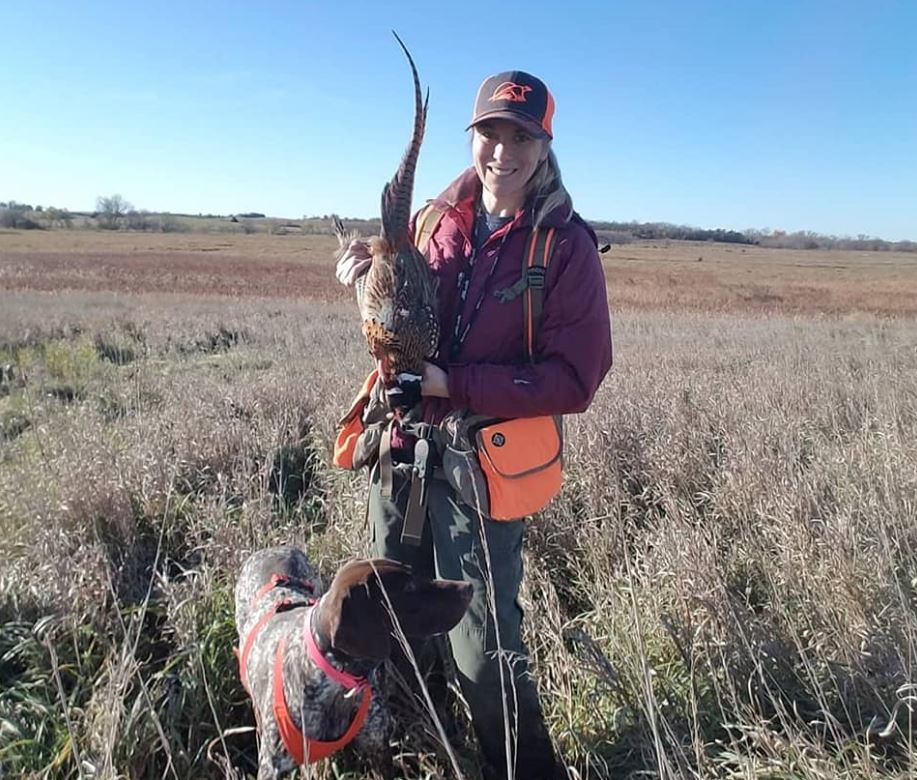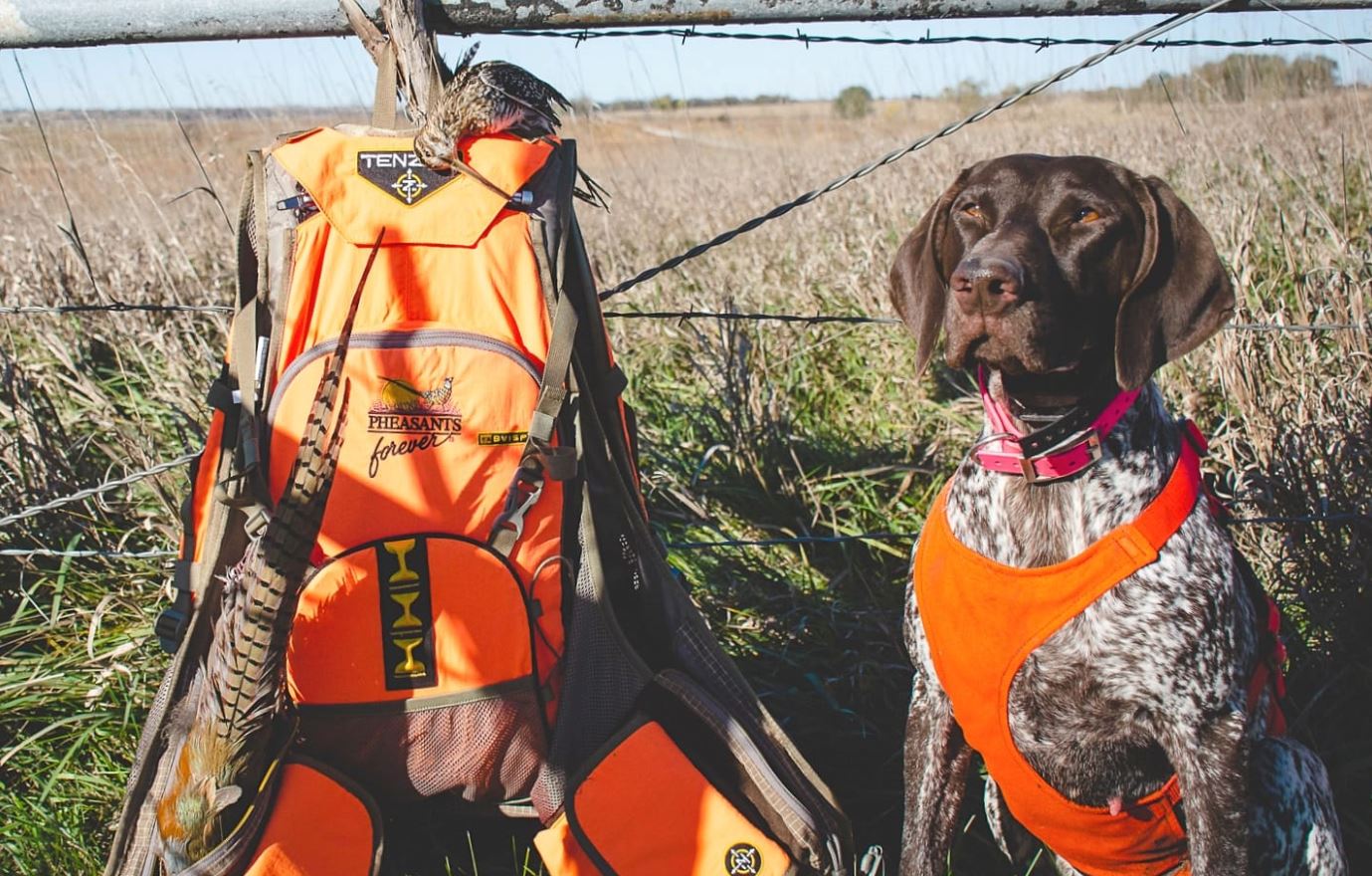Nebraska’s resilient pheasants beat horrible winter and sodden spring/summer, habitat and hatch look good (especially late nests), birds to be had
By Tom Carpenter
That brilliant headline about sums it up for The Cornhusker State this fall. And as usual, Nebraska provided oodles of relevant information on Nebraska rooster hunting! Read on.
WEATHER / CONDITIONS
“Compared to recent years, Nebraska experienced a more severe winter in 2018-19,” reports John Laux, upland habitat and access program manager for the Nebraska Game & Parks Commission (NGPC). “Overwinter survival is generally not limiting factor in Nebraska yet the ‘bomb-cyclone’ event was concerning as it brought above normal snowfall, prolonged snowcover and extreme freezing temperatures to nearly all regions of the state during February and March.”
“Although this likely caused some additional stress on the birds,” he continues, “our surveys suggest that this had little if any impact on pheasant survival. According to the April Rural Mail Carrier Survey (RMCS), population indices were up 14% statewide compared to 2018, and there were increases in all regions except the Southeast.”

FLOODING EFFECTS
Anybody who watched any kind of TV news this spring knows what Nebraskans experienced after the snowy winter and drenching spring. Uplanders were worried, and rightfully so.
“Yes, earlier this spring, heavy rainfall coupled with rapid snowmelt caused extensive flooding throughout portions of eastern Nebraska,” says Laux. “This likely displaced some wildlife, but the flooding itself had minimal impact on pheasants, or other upland gamebirds for that matter.”
“Most flooding occurred in March and April,” he explains, “which is well in advance of the primary nesting season. Additionally, most floodplains impacted by the flooding are intensively farmed and offer very little in terms of suitable upland bird habitat to begin with.”
“That being said,” he continues, “many watersheds in eastern Nebraska saw an increase in prevented-plant acres this year, which will equate to some short-term gains in additional habitat. Most of the more traditional pheasant habitat in Nebraska occurs on upland sites and was not impacted by flood waters.”

NESTING AND BROOD-REARING
“Throughout most of Nebraska, cool/wet conditions persisted into May and June and this likely had a negative impact on early nesting attempts,” says Laux. “Excepting portions of northeastern Nebraska, all regions experienced above normal precipitation during the primary nesting season (May 1-July 31).”
“Average daily temperatures were below normal,” he adds, “with more significant departures in the western half of the state.”
“Still, the abundant moisture has resulted in improved habitat conditions throughout much of the pheasant range this summer,” he says. “In the Southwest and Panhandle regions, wheat harvest was slightly delayed this year which likely provided some additional cover for re-nesting attempts and recently-hatched broods alike.”
“Over the past several weeks, a handful of damaging thunderstorms have been reported in portions of western Nebraska,” he points out. “Although the impacts from these storms are generally very isolated, hail and strong winds can degrade habitat and cause mortality so preseason scouting is encouraged.”

HABITAT NOTES
“In general, habitat conditions across the state look great going into fall,” says Laux. “Most CRP fields and grasslands throughout the state are extremely lush following the abundant moisture received earlier this spring/summer. This year’s wheat crop has produced some good (tall) stubble in the west which will provide additional cover this fall/winter.”
“Nearly all Rainwater Basin wetlands have been ponding water this summer,” he adds, “so pheasant production and hunting opportunities there may be more limited compared to previous years, and preseason scouting is highly recommended here.”
BIRD NUMBERS
“As far as surveys go, the July Rural Mail Carrier Survey (RCMS) typically provides the best insight regarding pheasant production in Nebraska,” explains Laux. “This year, that statewide index was 14% lower compared to 2018 and declines were observed in 5 of 6 regions. These lower indices are likely indicative of delayed nesting and/or abandonment of early nesting attempts caused by the cool/wet weather (mentioned above).”
“More recent field reports have been mixed but many have noted numerous (smaller-sized) broods in areas where suitable habitat exists – likely the result of later nesting attempts,” says Laux. “Habitat conditions have remained good-to-excellent throughout the summer in most areas and brood survival is expected to be relatively high for those that successfully hatched.”

TOP SPOTS
“In recent years, Nebraska’s best pheasant hunting opportunities have consistently been found in the Southwest and Panhandle regions, and this year will be no different,” says Laux.
SOUTHWEST
“The Southwest is known for its diverse agricultural landscape, abundant CRP and good bird numbers,” says Laux. “According to surveys, some of the highest pheasant densities will be found in Perkins, Chase, Dundy, Hayes, and Hitchcock Counties. This region also offers some of the best public access opportunities our state has to offer.”
“Oh, and don’t forget about mixed bag opportunities,” Laux adds. “Large tracts of native rangeland support greater prairie chickens, and good densities of bobwhites can be found a little further east. Hunters should note that some isolated hailstorms have recently occurred in the Southwest region so preseason scouting is recommended.”
PANHANDLE
“Public access is a bit more limited in the Panhandle but don’t let that fool you,” says Laux. “During wetter years, this region supports some of the highest pheasant densities in the state and should offer good opportunities again this fall. The CRP and tall stubble fields here are expansive so be ready to wear out some boot leather. In the South, Cheyenne, Deuel, Morrill, Garde, and Kimball Counties will offer the best opportunities, along with a few bonus sharp-tails as well. In the northern panhandle, Box Butte and Sheridan Counties support the best pheasant numbers.”
NORTHEAST
“In the mid-90’s, Northeast Nebraska was known as a premier pheasant hunting destination,” says Laux. “Although this landscape has changed considerably since then, good hunting opportunities do still exist where suitable habitat (primarily CRP) is available. Portions of Knox, Antelope, Cedar and Dixon Counties will provide some of the best pheasant hunting and public access opportunities this year (including WMAs, OFW sites, USACE lands).”
“Birds in eastern Nebraska are heavily reliant on CRP,” says Laux, “and some isolated tracts supporting good pheasant numbers are often overlooked by most hunters.”
PUBLIC ACCESS PARADISE
Here’s another note from Laux on Nebraska’s abundant access opportunities:
“The majority of pheasant habitat (and hunting opportunities) in Nebraska is found on privately-owned lands. As part of the NGPC’s “Berggren Plan” – a 5-yr initiative aimed at improving pheasant habitat and increasing public access opportunities – we’ve added over 83,000 acres of private lands to our Open Fields and Water (OFW) Program over the past 3 years (+36% statewide increase) and expect additional gains this year.”
“The majority of these new enrollments were targeted within the 8 priority areas identified in the plan and primarily consist of high-quality upland bird habitat such as CRP fields, tall stubble fields, and unfarmed draws.”
All publicly accessible lands are displayed in the 2019-20 Public Access Atlas, available at
OutdoorNebraska.org/PublicAccessAtlas.
See NGPC’s 2019 Upland GamebIrd Hunting Outlook
here.
And finally, Pheasants Forever Journal’s Fall Issue (which you should be seeing in your mailbox in early October) has a full feature on a Nebraska public lands adventure!
INSIDER TIP
“Throughout most of our state’s core pheasant range, this is one of those years where almost everything looks good,” says Laux. “Needless to say, hunters should find plenty of cover to walk this fall, but birds may be spread out due to the abundance of quality cover. A delayed corn/soybean harvest is expected in most regions this fall and this may pose some additional challenges to hunters during early portions of the season.” In other words, Nebraska may be the perfect spot for a late-season hunt!
